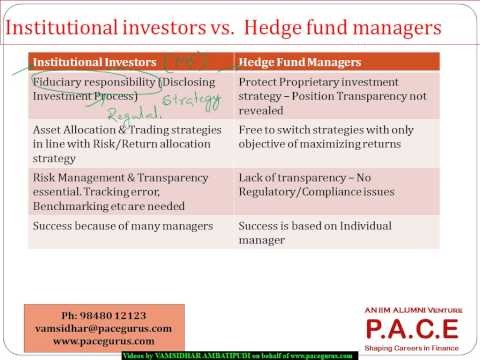Credit Default Swaps Training Seminar Financial Markets World Securities Industry Training
Post on: 24 Апрель, 2015 No Comment

Introduction to Credit Default Swaps & Other Credit Derivatives
March 30-31, 2015, New York City July 20-21, 2015, New York City
Beginner/Intermediate Level, 14 CPE Credits
Hours: 9:00 am — 5:00 pm; Registration/Breakfast begins at 8:30 am
Location: Club Quarters Hotel, 52 William Street, NYC (Wall Street Area) Directions
By the end of the course, the participant will be able to:
- Describe the features and characteristics of credit derivatives
- Explain the fundamentals of pricing
- Explain the risks associated with credit derivatives
- Analyze how credit derivatives are used in the financial markets
- Describe how credit derivatives impact agency ratings, and vice versa
- Identify respective market participants
- Consider different models of credit pricing and future developments
Day One examines fundamental characteristics of the single name credit default swap markets and relationships between different financial markets through arbitrage. Participants are also introduced to structured credits and how fundamental credit is altered through so-called financial engineering, and various applications of structured credits.
Session 1: Introduction to Credit Derivatives
This session introduces the basic credit derivatives structures. The features and characteristics are explored and basic applications examined. The main focus will be on credit default swaps. By the end of this session, the course participant will be able to:
- Define the basic credit derivative structures including:
- Credit default swaps
- Total return swaps
- Credit default options

Session 2: Pricing CDS via Asset Swaps and the Basis
Assets swaps are introduced and their connection to CDS pricing is explored. The basis between asset swaps and CDS spreads are discussed. Other applications are also examined. By the end of this session, the course participant will be able to:
- Describe the basics of pricing CDS via asset swaps
- Explain how the basis is traded
- Describe Risky DV01 and PV01
Session 3: Credit Derivative Applications
By the end of the session the course participant will be able to:
- Apply different CDS trading strategies:
- Switch trades
- Curve trades
- Forward trades
- Capital structure trades
- Apply total return swaps
Session 4: Collateralized Debt Obligations (CDOs)
This session deals with securitization and the CDO market with particular emphasis on CLOs. Examples from the market will be distributed and discussed. By the end of this session, the course participant will be able to:
- Explain the basic asset securitization structure
- Describe the basic structures of CBOs and CLOs
- Discuss the features and characteristics of these products
- Explain the pricing
- Identify the differences between funded and un-funded structures
Session 5: Structured Credit Derivative Products
This session examines the basic credit derivatives structures and how they are embedded in other securities. Examples from the market will be distributed and discussed. Products such as Credit Linked Notes (CLNs) and synthetic CDOs are examined. By the end of this session, the course participant will be able to:
- Decompose the structured product into its main components
- Describe the main structures including credit linked notes and synthetic CDOs
- Identify the main applications of structured products
- Explain the main risks associated with structured products
Day Two extends the concept of structured credit derivatives products to applications of more complex traded credit derivative instruments, and reviews credit indices and their applications in more detail. Pricing of credit derivative instruments is compared to traditional or fundamental extensions of credit, the methodology applied by credit ratings agencies, and how these models function in driving market and spread movements.
Session 6: Credit Indices and Tranches
The CDX and ITraxx indices are introduced. The features and characteristics are examined. Correlation trading is discussed. By the end of this session, the course participant will be able to:
- Define credit indices
- Discuss the features and characteristics of credit indices
- Analyze various trading strategies
- Describe and define tranches
- Explain correlation
- Analyze trading strategies using tranches
Session 7: Fundamental Credit Modeling
The basics of credit pricing are examined including exposure at default, probability of default and the recovery rate. By the end of this session, the course participant will be able to:
- Describe the rationale behind determining credit spreads
- Discuss different ways of managing exposure at default
- Discuss default correlation and how correlation impacts pricing for equity, mezzanine and senior tranches
- Discuss the recovery rate and determine how different recovery rates impact pricing
Session 8: Understanding the Ratings Agency Approach
Methodology used by ratings agencies to determine credit ratings are reviewed to highlight the intersections between ratings and spreads in the credit derivatives markets. By the end of this session, the course participant will be able to:
- Apply Financial Statement Analysis
- Assess earning power, liquidity and capital
- Relate financial structure to business risk
- Distinguish cash flow from income
- Apply ratio analysis
- Explain why rating agencies lag the debt and equity markets
- Apply the credit cycle to credit analysis
- Relate expected loss, default and recovery rates to ratings
- Consider how covenants impact credit quality
- Distinguish issuer and issue ratings
- Understand structural subordination
- Discuss the difference between working capital and term financing
Session 9: Credit Arbitrage, Models and Future Developments
The final session explores the evolution of credit modeling and relates traditional credit analysis with rating agency methodology, market implied credit spreads, credit structuring and corporate capital structure arbitrage. By the end of this session, participants will be able to:
- Describe the concept of market implied spreads
- Understand how theoretical and practical pricing intersect
- Describe how hedge funds might profit from credit arbitrage
- Appreciate pros and cons of different approaches to measuring and managing credit risk
- Assess the role of big data in future credit analysis














